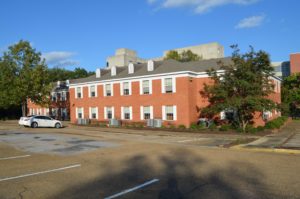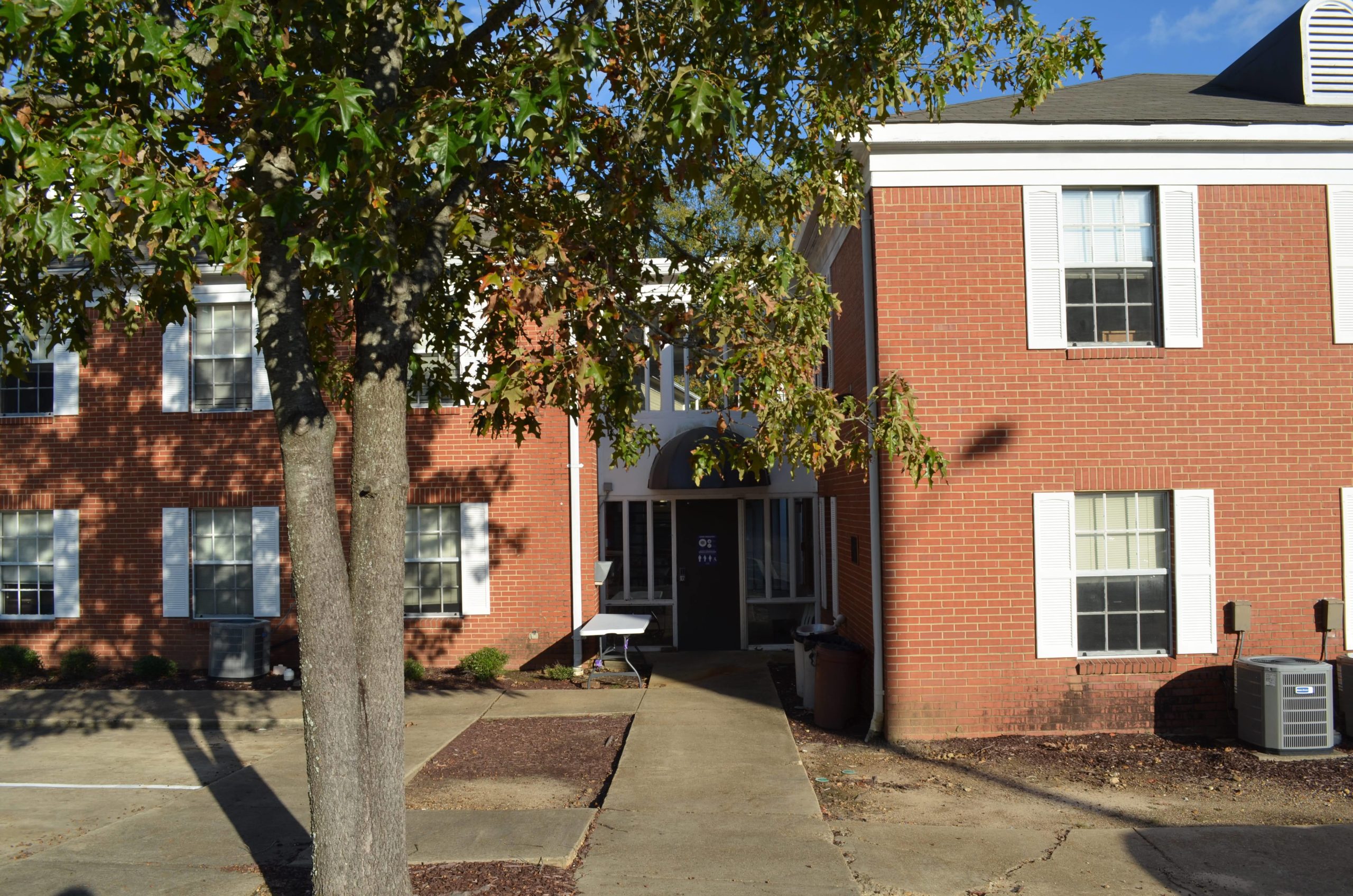Disclaimer: The following work is an opinion, based on substantial research, facts, and interviews.
Earlier this year, I wrote a piece called, “To Be a College Student During a Pandemic.” Since then, we have endured a bitter election and devastating hurricanes in the Gulf Coast region—while also continuing to battle a global pandemic. In my article, I grieved an empty campus, but remained optimistic that we would meet the learning curve imposed. Three months later, with hope on the rise due to breakthroughs in creating a COVID-19 vaccine, I feel equipped to evaluate where we find ourselves at Millsaps.
I spoke with three students regarding their experiences being isolated and quarantined on campus, both in Goodman and the Sigma Alpha Epsilon fraternity house.
To preserve journalistic integrity, I requested comments from Student Life staff. I was assured answers would be given. After asking three separate times, I have yet to receive correspondence. Communication and accountability are imperative to the trust on our campus. Town hall meetings are part of the solution, but mean nothing if voices are neglected behind closed doors.
For clarification, isolation keeps someone who is sick or tested positive for COVID-19 away from others. Quarantine keeps someone who was in close contact with someone who has COVID-19 away from others.
Millsaps freshman Jazzmyne Watkins was sent to Goodman as part of the volleyball team outbreak. She says, “My experience wasn’t very good. When I first got there, bugs were in the toilet…I didn’t feel comfortable staying there. Katie Sorey offered to have maintenance put a bug bomb in my room, but I would rather have a new one.”
Watkins’ ill-experience is not an isolated incident. Sophomore Emalie Dickey states, “In one word, it was awful. Some days we wouldn’t get food, and the meals they bring is the only food we get… I had to switch rooms because my AC unit was leaking water everywhere. John Fenner brought me a towel instead of sending someone to fix it, but I still had five more days… Katie Sorey said I could switch rooms. She is handling things well.”
Dickey continued, “There was so much dust and dead bugs, but I couldn’t put them in a trash can because we only had trash bags, not trash cans… I had to bring Kleenex from my own room. We had lots of toilet paper and trash bags, but nothing else.”
Watkins expressed a similar sentiment. “They gave you trash bags to use and when they were full you would put them outside your door. That’s all.”
Both Dickey and Watkins tested positive for COVID-19, and spent their time in Goodman. However, junior Grady Leek was quarantined in the Sigma Alpha Epsilon house, though members were not separated between quarantine and isolation.
Leek’s experience, though different from Dickey’s and Watkins,’ offers a candid depiction of the College’s shortcomings. “I had a real problem with how they handled the situation from the beginning. Someone tested positive who had been at the house the previous weekend, and instead of the school mandating that everyone get tested, they made us all quarantine at the same time… Obviously that didn’t work because right after we got out, somebody tested positive the same day. It would’ve been better if they had made everyone go get tests and go from there. Put whoever tests positive in Goodman and then leave everyone else in the house to quarantine. That would’ve been much simpler.”
It is important to note that along with these grievances, all three students gave credit to Student Life staff. Both Watkins and Dickey praised Katie Sorey for working with them on getting new rooms.
Leek too states, “Pretty much all they did was bring us meals. There wasn’t much more they could’ve done.”

However, the question comes to mind—did the College follow CDC guidelines?
The Center for Disease Control and Prevention (CDC) laid out guidelines for institutions of higher education to follow regarding COVID-19, accessible to anyone online. You can read them here.
Regarding cleaning and disinfecting areas for those that are sick, the Center states, “Close off areas used by a sick person and do not use these areas until after cleaning and disinfecting. Wait at least 24 hours before cleaning and disinfecting. If 24 hours is not feasible, wait as long as possible.” Both Dickey and Watkins were housed in Goodman and came to arguably unclean rooms. Waiting over 24 hours does not excuse facilities from being cleaned at all.
Of course, one would assume that the College has an Emergency Operation Plan (EOP) in place to mitigate the spread of COVID-19, and this plan would hopefully include the cleaning and disinfection of Goodman, both before the semester started, and after each student was cleared to leave.
The CDC also gives information regarding what they deem “adequate supplies.” This list includes “soap, a way to dry hands, tissues, hand sanitizer, disinfectant wipes, masks and no-touch /foot pedal trash cans (preferably covered).” These items have been broadly available across campus, and the College has kept wipes in classrooms and common spaces. But students were asked to bring their own supplies prefacing the semester. They recommended that students prepare a “quarantine go-bag” that they can easily access in the event of entering quarantine or isolation. However, the College also states, “emergency supplies of hand sanitizer, masks, and disinfectant will be available at the Student Life front desk.” Yet, students cannot enter campus buildings when isolating or quarantining. And Student Life didn’t offer to bring these items to students.
The College’s COVID-19 Dashboard states, “All students who have to be quarantined or isolated on campus: receive meals delivered to their quarantine/isolation site; receive a daily symptom status update call from the nurse at Wesson Health Center; receive medication if needed; receive assistance seeing a doctor/using telehealth if needed; receive guidance on how to be tested if needed.” Cleaning procedures and requests for supplies are not mentioned.
As for meals, the campus’ released Community Expectations further lays out what students should expect. “Students will receive a predetermined number of snack items, bottled water, and/or canned soft drink/milk/sports drink.”
“Sometimes we got water,” says Emalie Dickey.
Jazzmyne Watkins voiced an alike opinion. “The food they give you seems like scraps. One time we got two pieces of bread with a piece of cheese in the middle. Uncooked.”
Regarding Leek’s experience and his expressed frustration with lack of procedure, the Dashboard states, “Exposure (contact) is identified as the following: In the past 48 hours, contact with an individual who was experiencing COVID-19 symptoms or tests positive for COVID-19 that was: within six (6) feet of each other; and lasting more than 15 minutes. Students will then be expected to remain in quarantine residences until receiving their test results.”
Yet, the College didn’t ask for exposed members of the Fraternity to be tested. Instead, they mandated that everyone quarantine inside the Sigma Alpha Epsilon house—and then quarantined students again directly following their release due to a quarantined member’s positive test. If students had been separated following guidelines on the College’s dashboard, then those that tested positive should have been isolated, and those that did not should have been quarantined. But they weren’t. They were put all together without being tested.
Keeping members of Sigma Alpha Epsilon quarantined inside the fraternity house makes sense, but it only makes sense alongside testing; those that test positive must be isolated from those that do not. Otherwise, spreading occurs.
Let me be clear—mistakes have been made. The uncomfortable living conditions in both quarantine and isolation are not the only instances of disappointment on our campus.
However, I wonder if the solution is not criticizing the staff we do have, but instead pleading the College for more help. Four people are expected to run an entire Student Life program while also maintaining COVID-19 procedures and living quarters. Consistently changing guidelines and fatigue wear on an individual. Even still, this year of discomfort and displacement has affected their personal lives.
So, yes, slack needs to be given to the Student Life staff, but maybe not to Mother Millsaps.
The College Board and administration question why student enrollment is down, but fail to see they’re overloading the staff expected to make the campus attractive. How can you require four people to juggle what eight can barely handle? At a school that charges $58,516 per year, there should be finances for more help. And students should be fed.
Emalie Dickey says, “It felt like survival of the fittest.” I doubt she’s the only one.
For Emalie, Grady, and Jazzmyne, I beg the question, is asking for food, cleanliness, and supplies too much to ask?
And for the Millsaps Student Life staff, I ask the College, will you please be realistic?

This is a really well-written article Sara! Sad to see how things are being handled at Millsaps. Hope things are cleared up and improved for next semester but I won’t be surprised if you’re just speaking into the void. Some of current leadership in my experience doesn’t always listen to the students but does more for what will make them popular to the eye rather than fixing things at the root of the problem. Keep up the good work. I look forward to reading more from you!